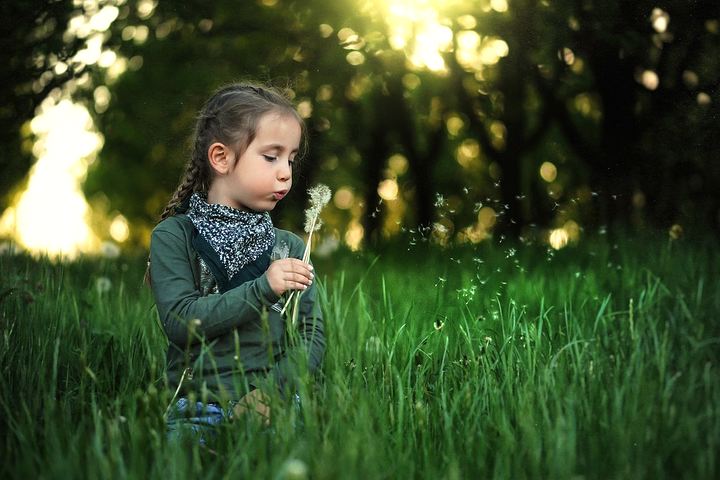See a video and written guide to hand washing with eczema, during the Covid-19 outbreak.
 Blowing pollen in the air can be fun, although not an activity which will suit all children.
Blowing pollen in the air can be fun, although not an activity which will suit all children.
Eczema is an umbrella term for skin conditions which include atopic, contact, or seborrheic dermatitis. In general usage, the terms eczema and dermatitis tend to mean the same, so we will stick with dermatitis.
A child’s skin is often red, itchy and inflamed, perhaps showing fluid filled bumps. Although children could be affected at differing ages, or see varied symptoms as they grow, dermatitis often appears in the early part of a child’s life.
This is particularly true for atopic dermatitis. A condition which may have hereditary links and is often triggered by allergens, such as pollen, mould, dust, animal hair, or types of food.
Dermatitis in children is quite common, even atopic dermatitis. Good quality care is available and makes sense with regard to the future.
The Atopic March
Children who have early atopic dermatitis are often seen as likely to develop allergic conditions, or asthma in later childhood. A “fact” that is called the atopic march and whilst partly true, there are other influencing factors.
A Canadian study in 2017 used data from 2,300 children. Whilst those with atopic dermatitis had a slightly higher prevalence for future allergies and asthma, children who also suffered from known allergic reactions in infancy had a much higher rate.
An investigation on larger numbers of children from the UK and Holland in 2014 offered similar findings. An early condition is an indicator but not categorically.
A range of factors matter, including genetics, age and severity of onset, a child’s environment. Detailed research in 2019 focused on factors involved in long term outcomes, reading an overview is helpful.
Knowledge has advanced and will continue to, specific allergies are not always identified in infancy, research highlighting the link between genetics and allergies is growing. Even so, all the studies mentioned share a message.
Identifying infants and young children at risk of developing lifelong atopic conditions is critical. A window of opportunity for intervention, targeted therapy, maintenance of the epidermal barrier and reduction in future problems.
Diagnosis & Treatment
Understanding the type of dermatitis (or eczema) a child has is key to good treatment and the only way to do so is to see an experienced doctor, normally a consultant dermatologist.
Although microscopic, or laboratory analysis should be available, diagnosis is mainly based on physical examination. Assessment of severity, medical and symptomatic history, trigger factors, any secondary infections.
Alongside a child’s medical history, knowledge of family history can be valuable. The effect on the family and on a child’s psychological, or social welfare are paramount and should be part of treatment decisions.
Whilst managing flare ups can be an aspect of dermatitis treatment, avoiding them is better. This can be influenced by avoiding triggers, by daily bathing, or moisturising routines, or more specific treatment.
Topical treatments (creams) can be helpful, corticosteroids, or immunosuppressant medication are possibilities in serious cases. Phototherapy can be an option, although needs careful use to avoid skin damage.
Alongside consistent rehydration, a combination of treatments for dermatitis (or eczema) can work well. Each child is unique, so their individual condition and needs will be.
All the children’s dermatology staff at our London clinics will ensure you and your child receive personal support. If we can help with advice, or you wish to arrange a visit, please get in touch at any time.
